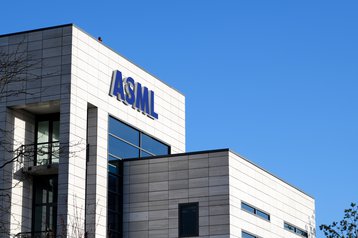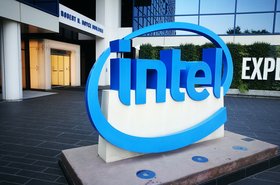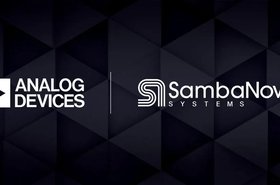ASML, the Dutch company which makes ultraviolet photolithography machines used by all the world's leading chipmakers, has become Europe’s second most valuable business.
With a market cap of €377 billion ($411bn), ASML is now the continent's second biggest enterprise behind Danish pharmaceutical company Novo Nordisk, the maker of the Ozempic weight-loss drug. It has overtaken luxury goods giant LVMH.
The news came in the same week that ASML opened its joint lab with Belgian R&D company Imec up to its customers. The two companies have been working together at the lab for some time, and the facility will now be available to clients, too.
Housed in Veldhoven, the Dutch city where ASML is headquartered, the joint Lithography Lab will offer companies access to a prototype high numerical aperture extreme ultraviolet (High NA EUV) scanner, in addition to other tools necessary for the semiconductor manufacturing process. These include a coat and development track, metrology tools, and wafer and mask handling systems.
“The ASML-Imec High NA EUV Lithography Lab provides an opportunity for our EUV customers, partners, and suppliers to access the High NA EUV system for process development while waiting for their own system to be available at their factories,” said ASML’s president and CEO, Christophe Fouquet.
“This type of very early engagement with the ecosystem is unique and could significantly accelerate the learning curve on the technology and smoothen the introduction in manufacturing. We are committed to work with and support our customers in this journey with High NA EUV.”
ASML has also pledged €1.1 billion ($1.19bn) in private funding under the European Chips Act to support a pilot line to develop and test new components including sub-two nanometer chips hosted and led by Imec.
ASML is the sole global supplier of extreme ultraviolet lithography photolithography machines that are needed to make the most advanced chips. The company’s standard machines, which were first produced in 2013, have a 0.33NA (numerical aperture), while the High-NA machines have a 0.55NA.
The High NA EUV machine works by hitting droplets of tin heated to approximately 220,000°C (396,032°F) with a laser to create 13.5nm light wavelengths, which do not naturally occur on Earth. This light is then reflected off a mask containing a template of the circuit pattern, and then through an optical system built with the most accurate mirrors ever fabricated.
Unlike traditional 0.33NA EUV, High NA EUV requires less light per exposure, reducing the time required to print each layer, and therefore increasing wafer output.
Last month, ASML announced it had successfully printed 8nm dense lines with its pathfinding High-NA EUV machine, beating the 10nm dense line record it set in early April. The record was set at the ASML and Imec joint lab.
ASML to ship High NA EUV system to TSMC this year
Despite previous reports that ASML has sold its entire 2024 stock of High NA EUV machines to Intel, the company has now said that it will ship one to TSMC in the next six months.
Confirmed by an ASML spokesperson to Bloomberg, the company’s CFO Roger Dassen reportedly told analysts on a recent call that the Taiwanese chipmaker will receive a machine before the end of the year.
ASML has the capacity to produce around five or six units of High NA EUV equipment each year, with each unit costing approximately $370 million.
Intel received its first High NA EUV machine in January 2024, with assembly of the Oregon-housed machine completed in mid-April.
It was recently reported that ASML had reassured the Dutch government it could remotely disable a High NA EUV machine owned by TSMC in the event that China was to invade Taiwan.
The United States buys 92 percent of its leading-edge chips from TSMC, meaning any disruption to that supply chain would have a significant impact on the US economy and data center market.






